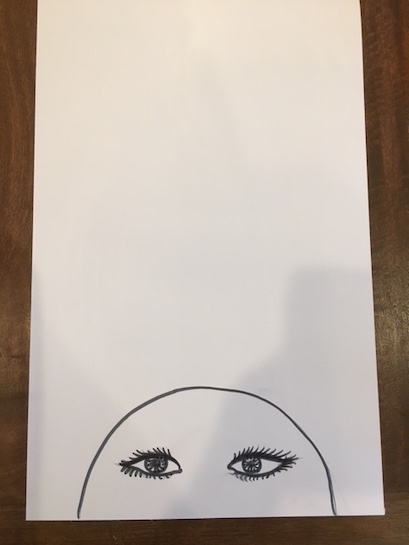After viewing work by artists who expressed emotions in their work, students will paint their own expressionist painting. Recommended for 1st Graders.
Color: Light reflected off an object. Color has three properties: hue (name), value (light/dark), and intensity (bright/dull).
Line: A mark with greater length than width. It can be straight or curved.
Shape: An element of visual arts; a two-dimensional (flat) area enclosed by a line:
Geometric: shapes and/or forms that are based on mathematical principles, such as a square/cube, circle/sphere, triangle/cone, or pyramid. Organic: shapes and/or forms that are irregular, often curving or rounded, and more informal than geometric shapes.
Movement: using the elements of art such that they move the viewer’s eye around and within the image. In this lesson it may be line & color that undulate to suggest a ‘flow' or feelings.
Expressionism: a style of painting of the 20th century, expressionism uses simplified designs and brilliant colors to express a definite or strong mood or feeling.
Artists create art that conveys to us how they think and feel about things. Artists use different lines, shapes, and colors to express their feelings. Every artist chooses their own colors, lines and shapes that are meaningful for them. Learn more about Expressionism as an artist movement HERE.
Using examples paintings from the artists above (“The Scream,” “A Starry Night,” and “Guernica”), ask the students what feelings those paintings show. And then, explain the meaning (according to grade-level) of each painting. Talk about lines, shapes and colors. See below:
Lines
Shapes
Colors
Students will:


Lesson written by & sample art created by Noreen Awan.
|
“The Scream” – Edvard Munch
|
“A Starry Night” – Vincent Van Gogh
|
“Guernica” – Pablo Picasso
|
“From the Lake” – Georgia O’Keefe
|
21st Century Thinking Skills
Thinking flexibly questioning, creating, observing, making connections, visualizing, comparing/contrasting, determining main idea, determining point of view, fact & opinion.
WA State 2017 Learning Standards
(VA:Cr1.2.1) a. Use observation and investigation in preparation for making a work of art. This happens when observing artist work for evidence of how they represent emotion.
(VA:Cr2.1.1) a. Explore uses of materials and tools to create works of art or design. This happens when students use permanent markers as line within a water color painting.
(VA:Cr2.2.1) a. Demonstrate safe and proper procedures for using materials, tools, and equipment while making art. This happens when students learn how to use the brushes to absorb paint, and the markers to make lines.
(VA:Cr3.1.1) a. Use art vocabulary to describe choices while creating art. This happens when the instructor refers to vocabulary works specifically during the lesson.
(VA:Re7.1.1) a. Select and describe works of art that illustrate daily life experiences of one’s self and others. This happens when artist’s emotions are described visually as part of their work.
(VA:Re7.2.1) a. Compare images that represent the same subject. This happens when students' or artists' work that represent the same emotions is compared. (How does Munch express fear? How did you express fear? How did other students express fear?)
(VA:Re8.1.1) a. Interpret art by categorizing subject matter and identifying the characteristics of form. This happens when emotions are categorized by elements of art that are chosen by the artist.
(VA:Re9.1.1) a. Classify artwork based on different reasons for preferences. Certain emotions are expressed differently by different students or artists. This is important because not all artists express an emotion in the same way and that is ok.
Please note: These lesson plans are intended for non-profit use only. Use of these plans for commercial purposes should give attribution to the Issaquah Schools Foundation and be accompanied by a nominal donation at www.isfdn.org/donate. Thank you.
Fueling Success for Every Student, Every School